The Wizard of Oz. A wonderful tale for children. It has everything a parent could wish for. Animal cruelty. Vomit. Sexual harassment. Racial stereotypes. What’s that? You think Oz shouldn’t have any of those things? Well, don’t tell Larry Semon, writer-director-producer-star of this version.
Bonus: I will also be reviewing the 1985 film, Return to Oz, a sorta sequel to the 1939 classic that enjoys a cult following of its own. Click here to skip to the talkie review.
Home Media Availability: Released on DVD and Blu-ray.
How bad could it be? Famous last words.
Update: This film contains some pretty awful racial humor. I know some viewers like to pull the “We can’t expect an old movie to be PC!” card when discussing this particular Oz but that argument is ignorant. African-American moviegoers, writers and thinkers DID object to stereotypes in films and DID voice those objections. Ignoring this fact does not mean it never happened and, frankly, obtuseness says more about the modern viewers than the film. As always, I recommend reading Returning the Gaze: A Genealogy of Black Film Criticism, 1909–1949 by Anna Everett.
Silent films don’t get very many major home video releases compared to movies of other eras. Generally speaking, only the finest or most popular films with the biggest stars are made available on non-boutique labels. That’s why The Wizard of Oz is something of an outlier. You see, it is widely considered to be one of the worst silent films ever made.

Why would this film receive release when other, better films are still waiting their turn? Well, sharing source material with one of the most beloved family films ever made certainly helped.
But is it really so bad? Do critics judge this movie harshly because the 1939 version is so popular? Is this really a hidden gem?
Let’s take a look at the movie and see if it deserves the critical drubbing it receives.
In order to give this film an even break, I am not going to be doing any comparisons to the Judy Garland-helmed classic. (For the record, I like that version and feel it deserves it place in the public’s heart, though it is not in my top ten.) I am going to do my best to approach the movie with fresh eyes and look at it only as a Larry Semon vehicle.
And who is this Larry Semon? He was a comedian noted for his comedy spectacles and frantic pace. He gained popularity in silent shorts but anybody who was anybody was moving up to features. In his book, The Silent Clowns, Walter Kerr noted that Semon lived in terror of losing his comedic appeal. He filled notebooks with gag ideas and tried to stuff as many jokes into his films as possible. (Semon eventually suffered from a breakdown and passed away under somewhat mysterious circumstances in 1928. He was 39 years old.)
Semon wrote, directed, produced and starred in The Wizard of Oz. It was his dream project, his baby. Now it’s time to see how he did.
The story opens with an elderly toy maker (Larry Semon) reading the story of The Wizard of Oz to his granddaughter. It is the tale of Prime Minister Kruel (Josef Swickard), his associates Lady Vishuss (Virginia Pearson) and Ambassador Wikked (Otto Lederer) and his opponent, Prince Kynd (Bryant Washburn).
Ow, this is hurting already.
It seems that the heir to the throne of Oz has been misplaced (you know how silent film folks are about misplacing their young ‘uns) and Prince Kynd is demanding that the prime minister produce the nation’s future ruler. To distract the angry people, Kruel has the Wizard of Oz (Charles Murray) perform some magic tricks. Being a charlatan, the wizard has no magic so he summons a mirror-wielding dancer in a six foot headdress out of a basket. As one does.
This appeases the people but where is that heir?
And so we are off the Kansas! Dorothy (Dorothy Dwan, the newly-minted Mrs. Larry Semon) is a sassy little number who is about to turn 18. She has two farmhands as suitors: Oliver Hardy and Larry Semon. (The characters are not given names so I will just call them Larry and Oliver.) She also has a sweet Aunt Em (Mary Carr) and an Uncle Henry (Frank Alexander), who doesn’t seem to like her very much.
The farm population is rounded out with an African-American character named Snowball (yes, really), played by G. Howe Black. Snowball steals watermelons.
May I leave now?
No?
Sigh.
G. Howe Black was apparently a stage name used by an actor called Spencer Bell. In the interest of everyone’s sanity, I am going to call his character Spencer.
I hate this movie.
Larry wants to win Dorothy’s heart but she is smitten by Oliver. Larry plans to make his move by giving her his used lollipop. He sneaks it into her pocket but is tastes nasty and gets tossed to a duck. Larry decides to club the duck to death in order to get his lollipop back. The duck projectile vomits into Larry’s face.
Are you sure I can’t leave?
You know, when I started writing about silent movies, I did not anticipate having to bring up projectile vomiting.
Anyway, Larry then gets annoyed by a bee. So, naturally, he decides to club it to death. But he forgets where the hive is, gets attacked by a cartoon swarm and is forced to flee.
Larry is giving me ideas. I am going to look for something heavy so I can club this disc to death.
In any case, it turns out that Dorothy was left on the doorstep as a baby, along with the credentials proving that she is the rightful heir to the throne. Prime Minister Kruel is the fellow who did the dirty deed and he plans to get those credentials back. But why did he leave them with Dorothy in the first place?
Wikked climbs into a biplane (were you expecting a tornado?) with his minions, intending to get those credentials.
Semon seems to have attended the George Lucas Screenwriting Academy (You know what the kids love? Political intrigue!) and the film suffers for it. Instead of creating a magical world of fantasy, we are given a bland Ruritanian land that we have already seen in dozens and dozens of films. Worse, the intrigue is ineptly handled, with heroes and villains in intense competition to see who can be the more idiotic.
Wikked and his minions lurk about outrageously, swirling their capes. It is one of the few comedic elements in the film that actually works on some level. However, Semon’s determination to have stunt-and-spectacle set pieces undermines any funny business before it can even get going. Soon Dorothy is dangling from a tower (it is obvious that the actress’s stunt double is a man) and everyone is running around frantically to save her.
This scene illustrates everything that is wrong with the humor in this movie. You see, successful comedy is not about throwing a bunch of activity at the screen and hoping that something sticks. Frenetic does not automatically equal funny. Larry Semon may have had his notebook brimming with gags but he was out to sea when it came to timing and impact.
The movie finally heads to Oz, complete with tornado, and Larry, Oliver and Spencer don disguises. The scarecrow, tinman and lion, respectively. Then there is more running about and Kruel tries to force himself on Dorothy and then the movie ends.
In addition to a meandering plot, the movie also fails to consider even basic character motivation. For example, Uncle Henry openly despises Dorothy and behaves abusively towards her. Later, however, when he is held at gunpoint and ordered to hand over her credentials, he steadfastly refuses. And even though Dorothy has professed her love to Larry, she has no qualms about seeing him locked in a dungeon. The characters perform actions as dictated by the scenario with no regard to personality or motive.
Semon lobbied hard for the rights to the Oz books, which seems strange in retrospect because so little of the original material makes it to the screen. The Oz brand was a strong one with 14 canonical books written by L. Frank Baum. The fantasy genre is heavily dominated by European-flavored worlds, which makes Baum’s extremely American setting a breath of fresh air. As a feminist, Baum also made sure to include empowered women in his tales. I imagine that he would have been horrified to see his matriarchal fantasy world turned into a pedestrian little country and his spunky Dorothy morphed into a proto-Lolita. (L. Frank Baum, Jr. is credited as co-author of the 1925 screenplay but it is unknown how much writing he actually did for the film.) And the wizard of the title? Reduced to just a few moments of screen time and called a charlatan right off the bat.
This is an awful bit of cultural vandalism but… I actually have to defend Larry Semon here. Look, the changes he made to the Oz tales were awful and inappropriate, most everyone agrees on that. But how many movies follow the book upon which they are based? We live in an age where every pregnancy manual, board game, action figure and 80’s cartoon is considered basis for a major motion picture. Producers will buy original scripts and then slap a recognizable name on them to sell tickets. It’s a bait-and-switch and it’s as annoying as anything but it was and is extremely common. Some of these movies are even good. Semon was guilty of appropriating a brand without using its substance. If that’s a crime, all the producers in Hollywood would be jailbirds. What Semon deserves to be roundly condemned for is appropriating the brand badly.
I must break in here, though, and correct a myth that seems to have originated in Walter Kerr’s perennially popular book, The Silent Clowns. In the book, Kerr recalled that he tried to see this film as a child but was told by his friendly local theater owner that the film was so bad that it had put its studio, Chadwick Pictures, out of business.
This anecdote is repeated constantly in relation to The Wizard of Oz. So bad it brought down its studio! Well, the problem is that Chadwick didn’t go under in 1925. It continued to crank out budget films and rip-offs of popular properties of the stage and screen until 1928, when the talkie revolution was in fill swing. Chadwick returned with two credited releases in 1933 and then disappears into obscurity.
The fact is, The Wizard of Oz did respectable business for an independent, especially in Europe, but it couldn’t break through because of mixed contemporary reviews, the block booking system and its reliance on children to make up the bulk of its audience. Children were far more likely to take up cheap seats in the lower-priced matinees, which meant that it took a much larger attendance to turn a profit.
(You can read all the details of the film’s release in the excellent Oz before the Rainbow: L. Frank Baum’s The Wonderful Wizard of Oz on Stage and Screen to 1939 by Mark Evan Swartz, a well-researched book that is of particular interest to students of silent film.)
So, is this movie the worst silent film ever made? Probably not. Larry Semon is… odd, Dorothy Dwan mugs in a stunningly unfunny manner and 95% of the jokes fall flat. On the other hand, Oliver Hardy, Spencer Bell and Charles Murray do their best with the material. Semon had a distinct failing when it came to comedic timing, which undermines their performances but they still should be commended for accomplishing anything in this train wreck.
This movie is sometimes called the Plan 9 of the silent era. I think that is an apt description. You see, the Ed Wood schlock-fest is not the worst movie ever made as it is quite entertaining, albeit not in the way its creators intended. I can see The Wizard of Oz being enjoyed for its awfulness. Watching it MST3K-style with a group of like-minded friends is certainly an option.
So, worst silent film ever? No. Worst silent movie to receive Blu-ray release? Oh, yes.
Movies Silently’s Score: ?
Where can I see it?
If you must, the film is widely available on DVD. It is in the public domain and dozens of editions are available. I recommend seeing the version included as an extra on most of the deluxe DVD or Blu-ray releases of the 1939 film. The Robert Israel score helps immeasurably in getting through this turkey. Plus, you get the classic Judy Garland version to cleanse your palate. If you don’t feel like forking out the dough, the bargain editions are cheap.
Can I just mention how unfair it is that this film gets an orchestral score and Blu-ray release when classics like The Wind, The Scarlet Letter and The Student Prince in Old Heidelberg are still only available on VHS in the USA?
Silents vs. Talkies
The Wizard of Oz (1925) vs. The Return to Oz (1985)
With so many Oz films available, this was an ideal opportunity to have a Silents vs. Talkies feature. But which version should be featured as the sound film? I rejected the idea of using the 1939 classic. The winner is obvious from a mile away and it ain’t the silent.
For an apples to apples comparison, I decided to feature the 1985 Disney film Return to Oz. Like the 1925 film, it concerns itself with the missing heir to the throne. Both films were box office disappointments and both endured their share of critical wrath. The 1985 film was scolded in particular for being too frightening for children.
So, which red-headed stepchild of Oz is going to be named champion?
The Talkie Challenger: Return to Oz (1985)
I watched this film for the first time when I was preparing this review. As a kid, I saw previews for it on VHS tapes but it always looked freaky and weird to me. Keep in mind that I was a terrible ‘fraidy cat. Raiders of the Lost Ark nearly gave me a nervous breakdown and I still can’t stomach anything remotely resembling a modern horror film. This grim, decayed land of Oz was not for me. Even the tiny clips I saw scared me. I remember that the film was a bit of a scandal in my grade school. The moms discussed it in hushed voices:
The villainess takes off her head!
The characters are nearly eaten!
My kids had nightmares for weeks!
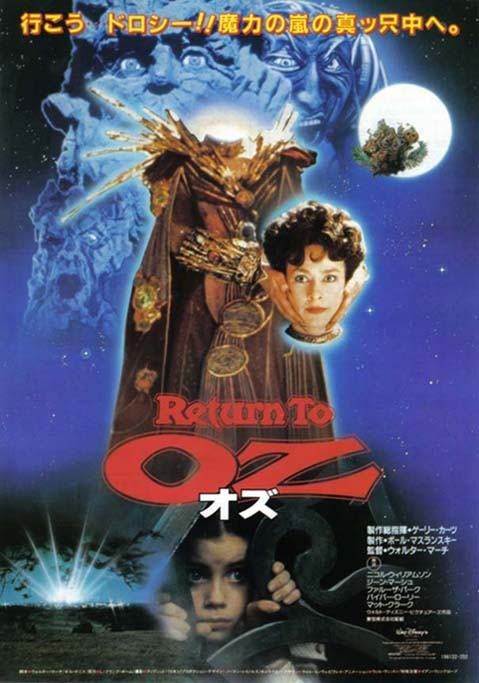
Needless to say, even if I had wanted to see it, there was no way it was coming into our house. A good thing, considering. So, this was a fun opportunity for me to take a look at what the ankle-biter version of me was missing.
The story begins six months after the events of the first Oz book/movie. Dorothy (Fairuza Balk) is always talking about her mysterious adventures and Aunt Em (Piper Laurie) has decided to take her to get electroshock therapy. Dorothy is locked inside an insane asylum for the night. She gets strapped to a gurney and is wheeled in for the shock therapy but the power goes out before it can be administered. A mysterious girl rescues Dorothy and the pair race out into a wild storm. (These Oz films certainly do not make Kansas look like an attractive place to live.)
Dorothy is swept away in an overflowing river but manages to climb into a chicken coop. When she comes to, she is back in Oz. Accompanied by her pet chicken, Billina, Dorothy tries to find her old friends. However, the yellow brick road has been uprooted, the emerald city is in ruins and everyone inside is a statue. The city is occupied by the Wheelers, men with elongated limbs with wheels on the end instead of hands and feet. They threaten to cut Dorothy up and throw her into the Deadly Desert.
For the kids, folks, for the kids!
Anyway, Dorothy makes new friends, evades death and dismemberment repeatedly and finally succeeds in her quest to save the land of Oz.
I realize that darker fare is the order of the day, even in family entertainment, but I would certainly hesitate to show this movie to kids. To be honest, I am a bit indignant on behalf of 1980’s me. This movie would have freaked me out. The Wheelers alone would have been nightmare fodder for a few months at least. And don’t even get me started with the whole villainess-who-steals-heads-and-changes-them-like-hats thing. The film was just an enormous miscalculation on the part of Disney and director Walter Murch.
I should point out that many of the darker elements of the film were lifted directly from the original Oz books. In fact, this movie is widely praised for being more faithful to its source material. (However, in the original books, it is clear that Oz is a real place and that Dorothy really did travel there. Both the 1939 film and this 1985 sequel go the “it was only a dream” route, which I do not really care for. I always feel a little disappointed when fantastical adventures turn out to be the result of a blow to the head or too much punch at the party.)
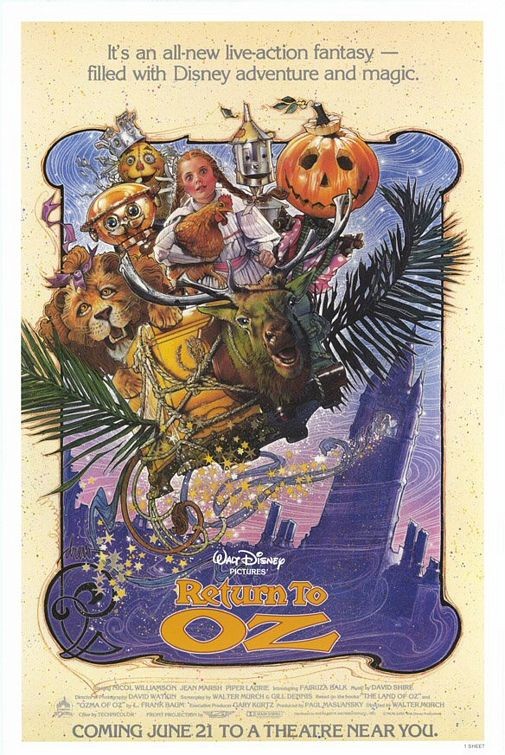
In any case, considering what the Oz (and Disney!) brand meant to most film-goers and the inevitable expectations that would result, embracing the darker side of the series was a gamble that did not pay off. Families stayed away in droves.
So, it fails as a family film. But how does it work as a fantasy?
Pretty well, actually.
The practical effects look great (though the green/blue screen effects are a bit dodgy) and the design really does try to emulate the original Oz illustrations. The plot is a little repetitive (Dorothy trapped, finds new friend, escapes) but it keeps moving.
Further, Fairuza Balk is an excellent Dorothy and a charming little actress. I am not overly fond of child actors in talkies (particularly from the 1930-1980 period). They are often over-rehearsed and fall into this annoying “Golly, Mr. Apache, why do you have to fight the cavalry? I think that’s awful mean!” sort of dialogue.
I mean, gee, Mr. Producer Man. Why you gotta make the kids so annoying? It sure would be swell if they talked like actual human beings.
Anyway, Fairuza is very natural as Dorothy. She’s a smart kid, sweet but not saccharine, and it is completely believable that the assorted creatures of Oz would wish to befriend her.
In the end, though, Return to Oz is fairly empty. The magical quality that made the 1939 so special was impossible to recapture. Walter Murch said later that he was not aiming to make a true sequel to ’39 Oz since that film had been very much a product of its time. However, the ’85 film tries to have its cake and eat it too. It uses several distinct elements from the 1939 film (ruby slippers, it was all a dream) but then darkens up the plot. Simply put, you cannot draw on the goodwill of a popular film and then toss your audience into the soup.
It’s very easy: Cut off your film from other versions completely if you plan to go off in a very different direction. Otherwise, just make a direct sequel.
And the winner is…
THE TALKIE
Not much of a surprise here. I mean, almost any film could beat the 1925 version by just not including ignorant racial stereotypes.
Return to Oz is a decent (if repetitive) film that suffered from marketing miscalculations. It’s a dark slice of childhood nightmares that had no business being sold as a family film. However, it succeeds as a straightforward fantasy and is quite enjoyable as such. While I did not enjoy it as much as other 80’s films in the genre, it would still be a welcome presence at a movie night. On the scale of 1980s fantasy, I rate it under The Neverending Story, The Princess Bride and Ladyhawke but it is much better than Legend, Red Sonja or Krull.
While the silent film used the Oz name for marketing and then managed to scrape away all of what made Oz Oz, the talkie embraced the sometimes-macabre imaginary world a little too enthusiastically. Both films suffer for not understanding that in branding, perception is more valuable than reality. The sound film is just the more polished product.
Availability: Return to Oz has been released on DVD.
☙❦❧
Like what you’re reading? Please consider sponsoring me on Patreon. All patrons will get early previews of upcoming features, exclusive polls and other goodies.
Disclosure: Some links included in this post may be affiliate links to products sold by Amazon and as an Amazon Associate I earn from qualifying purchases.




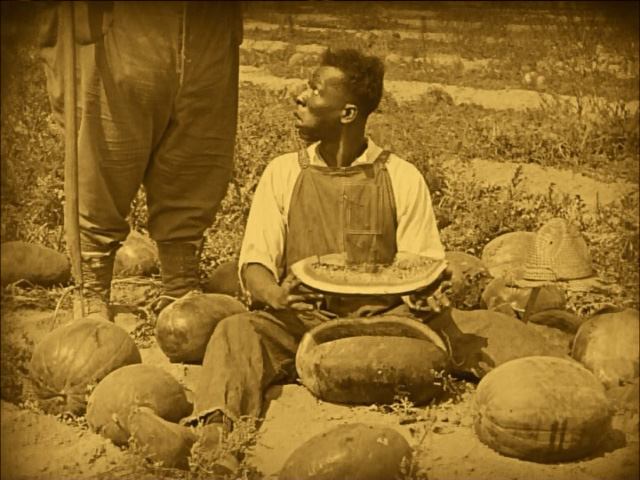
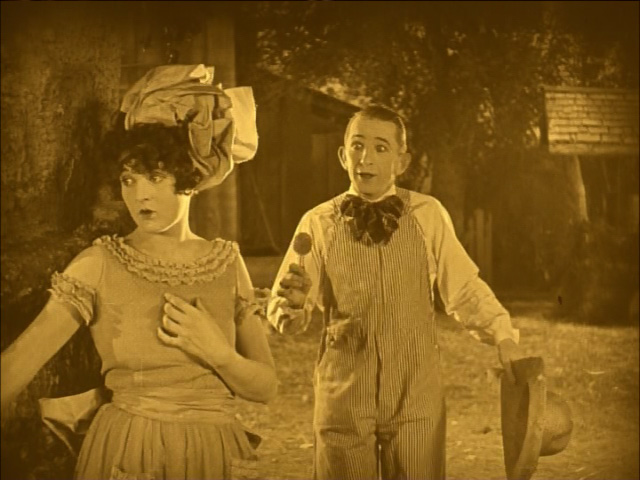


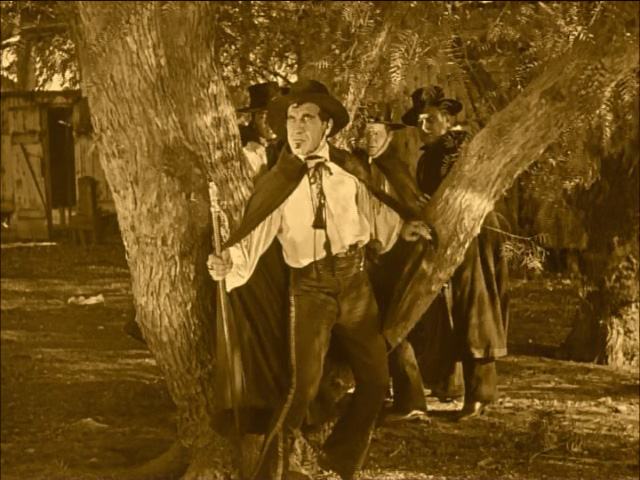
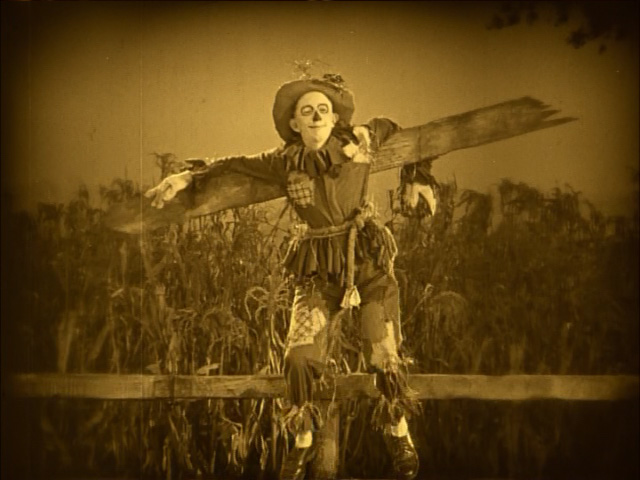
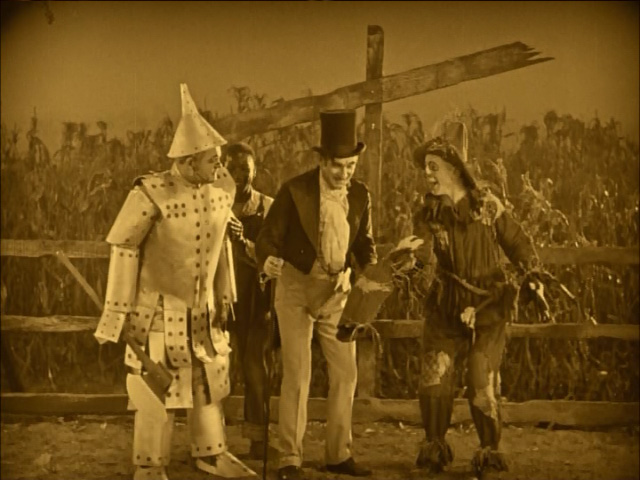

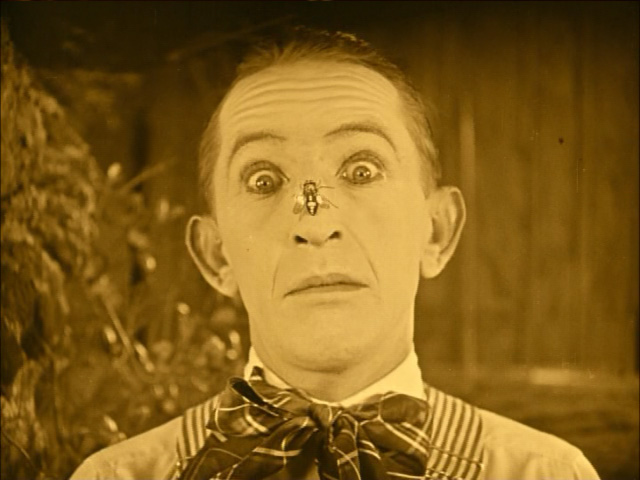
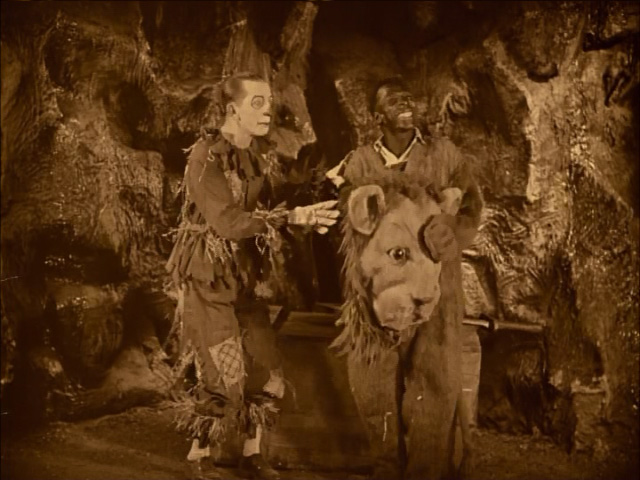
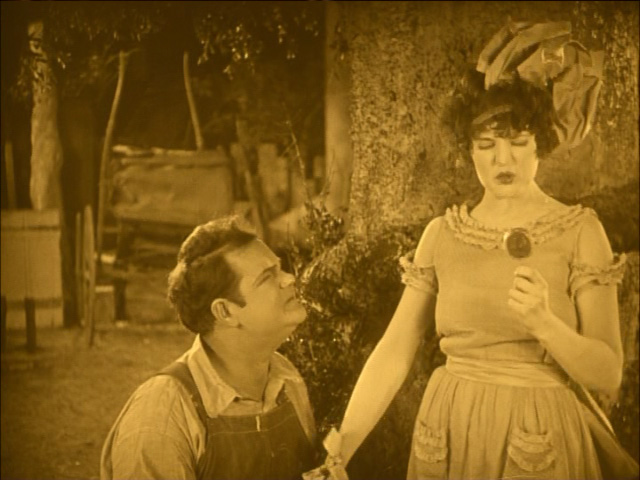
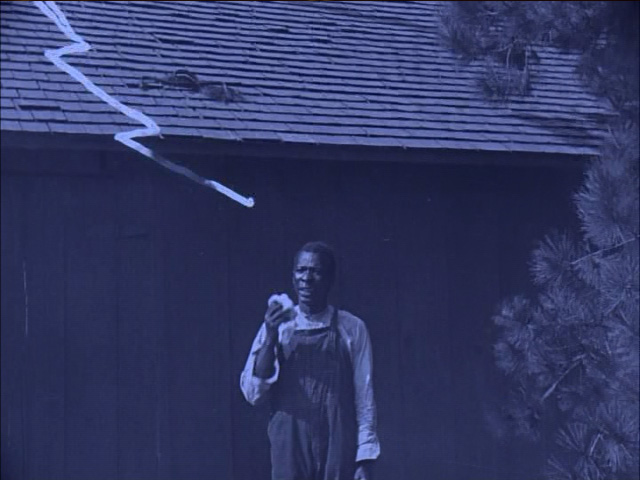
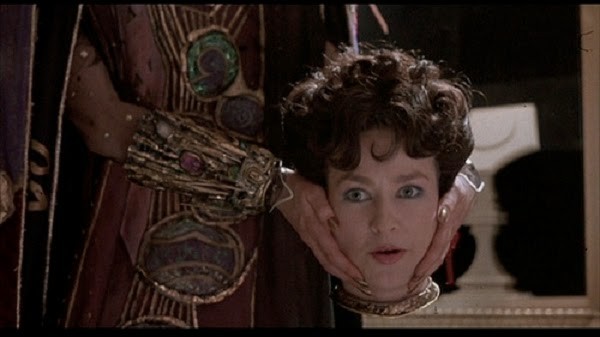
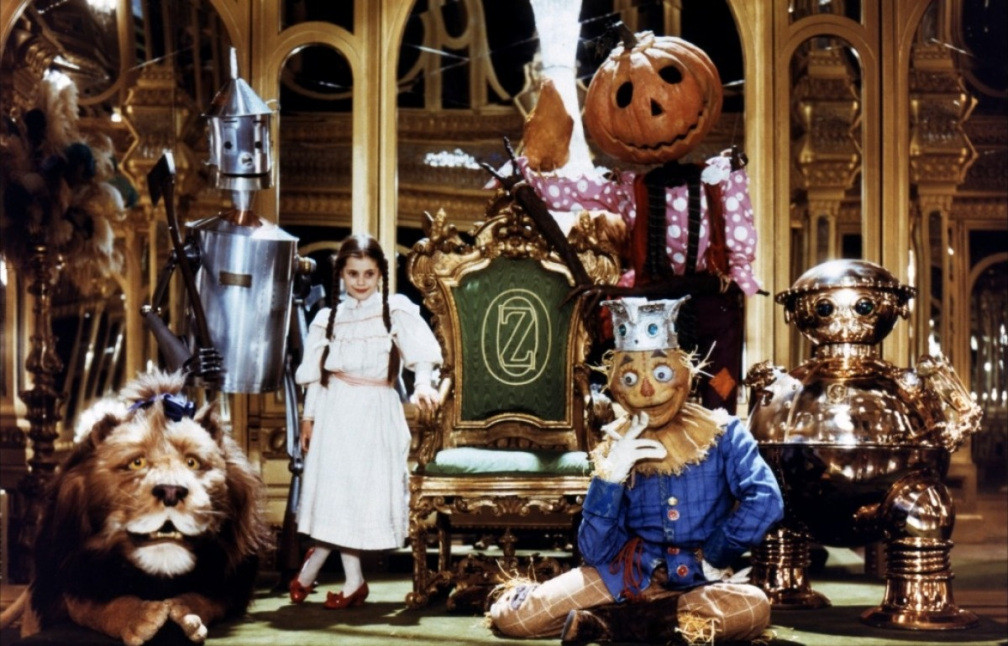
I had NO idea about this silent version and I can’t wait to check it out…ok, I can wait but my curiosity will bring me around to watching it soon. Thanks for the tip and the very funny review! 🙂
No problem! I recommend the 1910s films produced by L Frank Baum himself.
Hoo, boy. I need to see that first OZ now, as this is the first (and funniest) review I’ve read of it.
Amusingly enough, I’d been warned it was terrible and all your opening suggests by a few who have seen it, but I’ll take the plunge just to get it over with. I may wait ’til the first winter snow so I can have a snowball to throw at the TV when Snowball pops up, but I’m not tracking down a queasy duck under any circumstances!
I didn’t like Return to OZ when I paid to see it back in ’85 (the effects work was shoddy on a big screen), but it was on TCM a while back and I ended up liking it a bit more upon a second viewing (and look-see at some of the OZ books). I still need to see that last OZ film from last year (It’s on cable this month), so I’m hoping it’s a bit more… memorable (in a good way)…
Have fun with it! This Oz is certainly a film that calls for the inner heckler to come out.
I’m glad you tried to have an open mind about the silent Oz, but it is a strange brew. My favorite quote: “Worst silent movie to receive Blu-ray release? Oh, yes.” My daughter is a big Oz fan. She doesn’t like the Larry Semon version. She likes Return to Oz. I vote with you that it is much better, albeit kind of scary.
Thanks! Yes, I really did try but it was just too awful. :-p
By the way, Fritzi, I hope you’ll see some of the earlier silent Oz movies. They can be charming.
A considerable improvement over Semon’s version 🙂
While the 1925 Wizard of Oz is, yeah, that jaw-dropping, I hope the movie (or for readers, the review) doesn’t permanently put people off Larry Semon. He’s got a good number of short subjects that are pretty successfully funny and Turner Classic Movies brings them out a couple times a year. Just this … well, maybe his ambition and the size of the project were too much for him.
(And I admit I can’t think offhand of a title I would recommend for Semon in the best light. On the other hand, well, look at the guy; he almost looks like the Platonic ideal of the silent-era comic actor. You just know in his everyday life he walked around the streets of Los Angeles being blown by sudden gusts of wind into puddles that were six feet deep and climbing out only to be scooped up by a trolley’s cow-catcher, which he jumps off of in time to have a water tower fall on him.)
Return to Oz, yeah, obviously the better film of this pair and pretty good in its own right. Disney spent an incredible amount of time trying to do something with the Wizard of Oz properties and it’s a bit of a pity they aren’t better appreciated. On the other hand, I have a circa 1970 record with some stunningly listless covers of the 1939 musical’s key songs, and some aggressively bland tunes for follow-up projects which started out as made-for-TV projects and gradually shrank until they were just audio adventures in LP format, and the whole album has not much besides curiosity or “the heck were they even thinking” to recommend it. Return to Oz might be nightmare-forming, but at least it’s got enough vision and ability that it could inspire nightmares.
Hi there! I think the Oz project was definitely just a plain bad fit for everyone involved. To be honest, I have seen Semon’s short work and the flaws that were present in Oz were there as well: A lot happens on the screen but I am not laughing. In all fairness, though, I am not a big fan of the hardcore slapstick style of comedy. I generally prefer more domestic comedies and Lubitsch-esque farces.